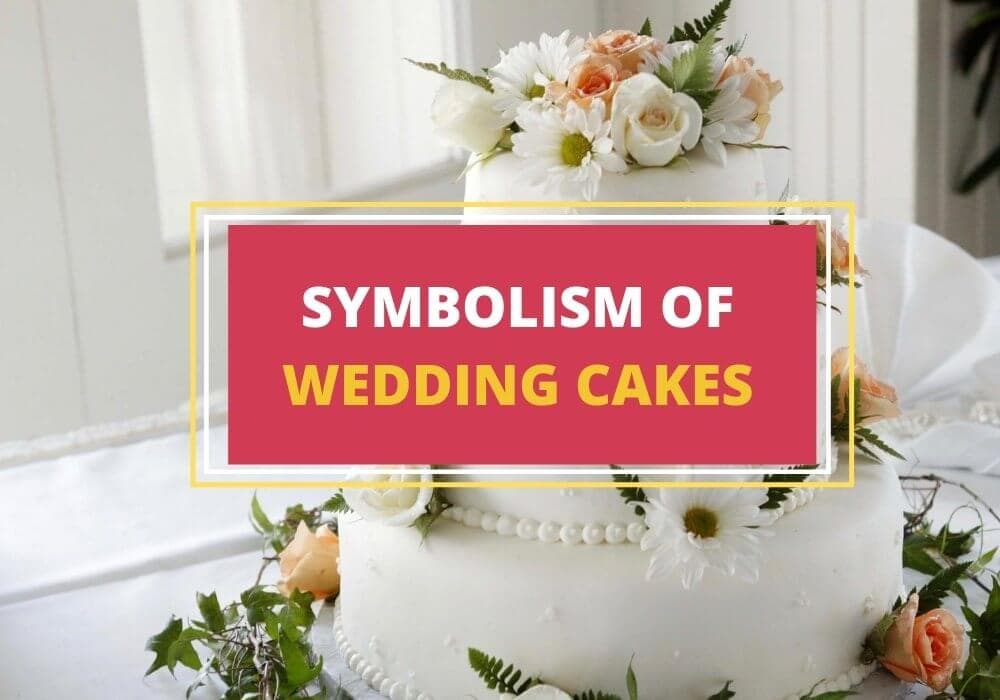
Table of Contents
One of the most fun parts of arranging and organizing a wedding is tasting and choosing the cake. Many couples eagerly await the cake cutting ceremony, either to smear some cream on their partners face, or to simply indulge in the joy of eating with their family. Wedding cakes come in a variety of flavors, shapes, colors, and designs, offering the couple plenty of options to choose from. But having a wedding cake is not just a bit of tasty entertainment, it is a historical tradition loaded with symbolic meanings.
In this article, we’ll be exploring the origins of the wedding cake, its religious significance, the various symbolic meanings associated with wedding cakes, and the different types of cakes.
Origins of the Wedding Cake
Ancient Rome Barley Bread
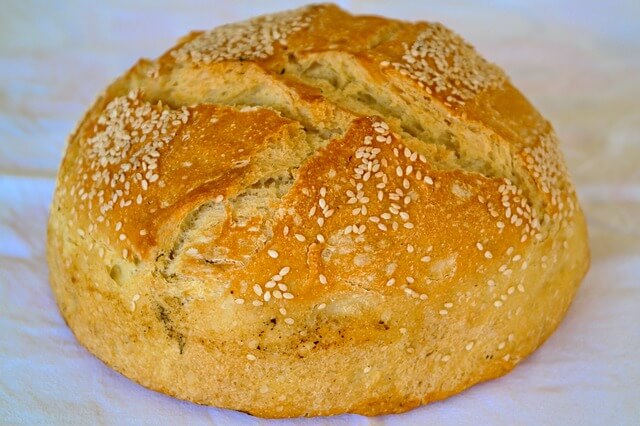
The tradition of having a wedding cake can be traced all the way back to ancient Rome, but the custom was … shall we say… different to what we’re used to today.
In Roman times, the groom would take a loaf of barley bread and break it over the bride’s head. The bread stood as a symbol of the bride’s purity and virginity. By breaking the bread, the groom was announcing that she was henceforth going to be under his protection and would be a part of his life both emotionally and physically. It was also a symbol of fertility. Guests would try to pick up crumbs of the bread to share in the good luck.
16th Century Bride Pie
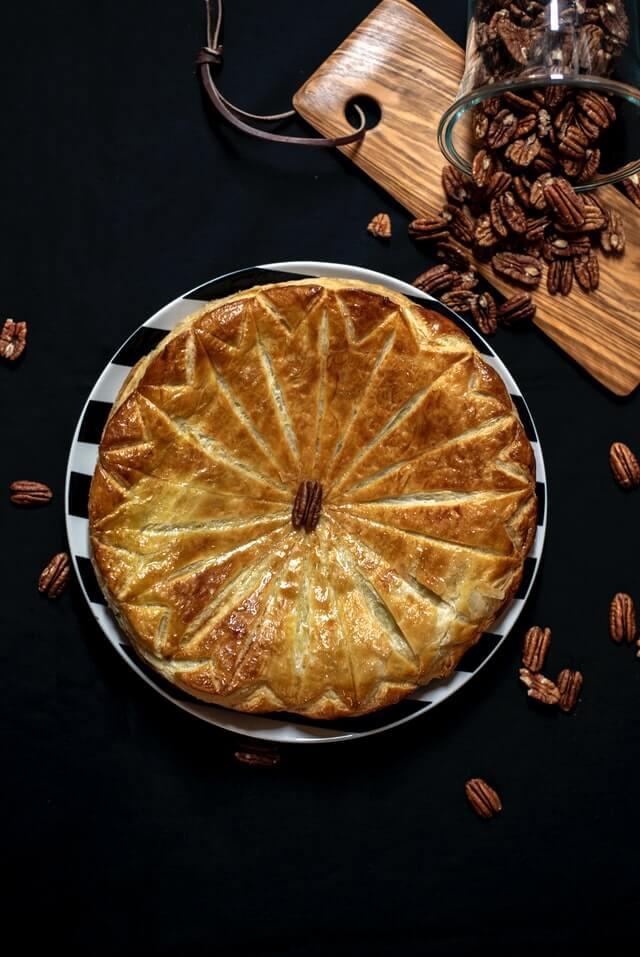
In 16th century Europe, a bride’s pie, a savory dish, was served at weddings. The pie had a combination of sweet pastry and meat – including oysters, mince, sweetbreads and more. The bride’s pie was considered an emblem of good luck, and all the guests were expected to eat it as an expression of their blessing towards the couple. It was common to hide a ring in the pie, and whoever found the ring in their slice of pie would be the next to marry (much like the bouquet tossing custom today).
Middle Ages Stacked Buns
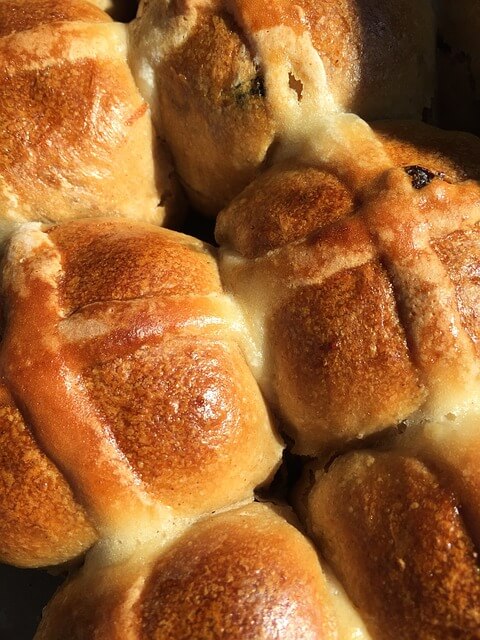
During the Middle Ages, it was common to create a stack of spiced buns balancing on top of each other to create a high pile. The couple were expected to kiss over this pile of buns, and if they were able to do this successfully, without toppling the tower of buns down, it was a sign that their marriage would be long and fruitful.
18th Century Bride Cake
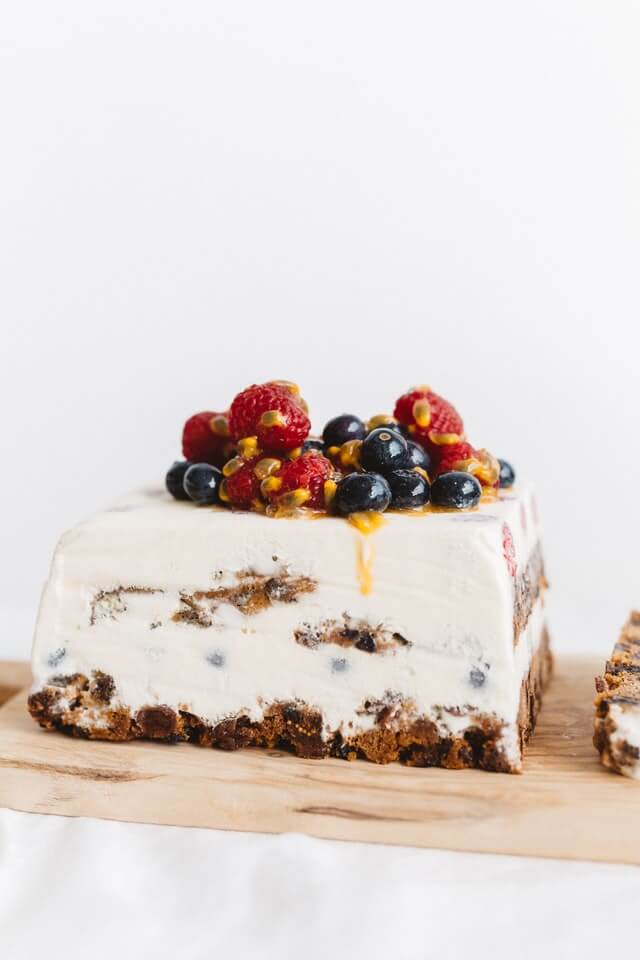
In the Victorian Era, savory cakes were replaced for fruit and plum cakes. Fruit cakes were a symbol of fertility, and they became immensely popular because Victorian society deemed that a prosperous couple were to have many children. This was also the time when white icing was desired as a symbol of the bride’s purity and her social status. Even today, this is a traditional option and given at weddings around the world.
The wedding cake was significant not only for the bride and groom, but also for visiting maidens. Tradition ordained maidens to keep a piece of wedding cake under their pillow. This act was said to bring dreams to the maiden of her future husband.
Symbolic Meaning of Wedding Cakes
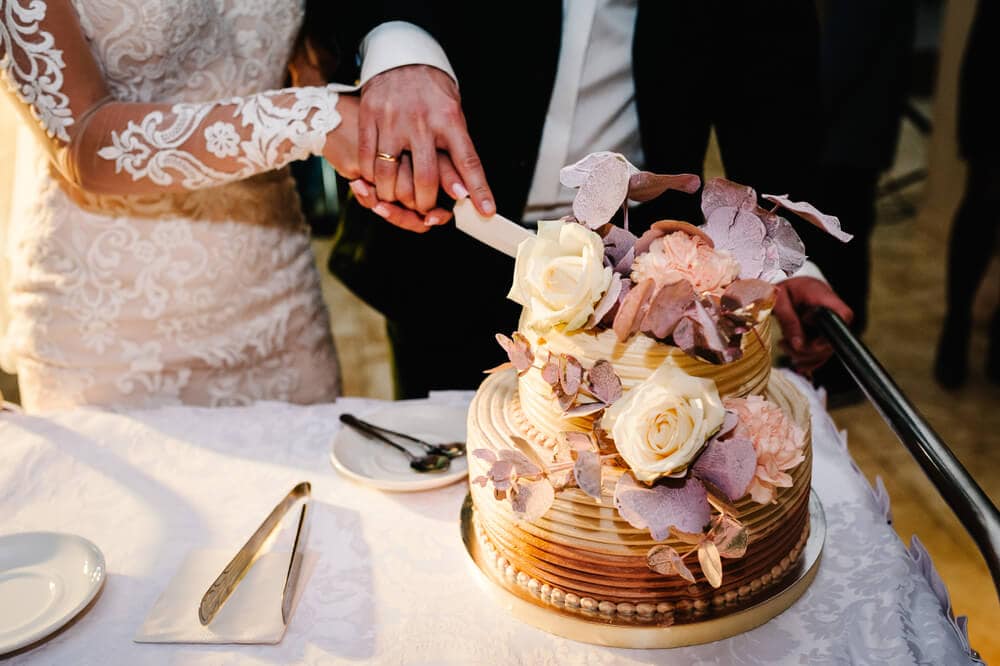
Wedding cakes have acquired many symbolic meanings over the ages. Some of the most significant ones are as follows:
- A Symbol of Happiness
Cutting the wedding cake has become a symbol of completion, perfection and happiness. It’s one of the first tasks that the couple do together and signifies their union as one.
- A Symbol of Wealth
Wedding cakes were a symbol of wealth in the Victorian era. The more tiers a cake had, the wealthier the family was thought to be. Icing was also a rare and expensive element, and the affluent families ensured that the cakes were immersed in them. Even today, large and elaborate wedding cakes symbolize wealth and prosperity.
- A Symbol of Purity
By the beginning of the 18th century, white became a popular choice for weddings, especially after Queen Victoria’s betrothal to Prince Albert. Henceforth, bridal cakes were frosted and iced in white, to reflect the virginity and purity of the bride. White wedding cakes are generally preferred as an emphasis of the pure and spiritual union between the bride and groom.
- A Symbol of the Covenant
Many Christians believe that the act of feeding cake to each other signifies the couple’s commitment to each other and their marriage. It’s viewed as an agreement to abide by the laws of the holy covenant of marriage.
- A Symbol of Good Luck
The wedding cake was a symbol of good luck to both the couple and the guests. For the couple it symbolized a long, happy, and peaceful union. For the guests, eating the auspicious cake was said to bring luck and help them fulfill their hearts desires.
- A Symbol of Offspring
In the 17th and 18th centuries, the bride cut the wedding cake as a statement that she was ready to forego her purity and bear the children of her spouse. The top tier of the wedding cake was saved for the future child’s christening.
- A Symbol of Companionship
In contemporary times, a wedding cake reflects love, partnership, and companionship. The bride and groom hold the knife together to symbolize their support and commitment towards each other. The couple feed it to each other in an expression of care and togetherness.
Types of Wedding Cakes
Although the charm and beauty of traditional wedding cakes can never be replaced, nowadays brides and grooms are choosing designs that reflect their own style and personalities.
Tall Cakes
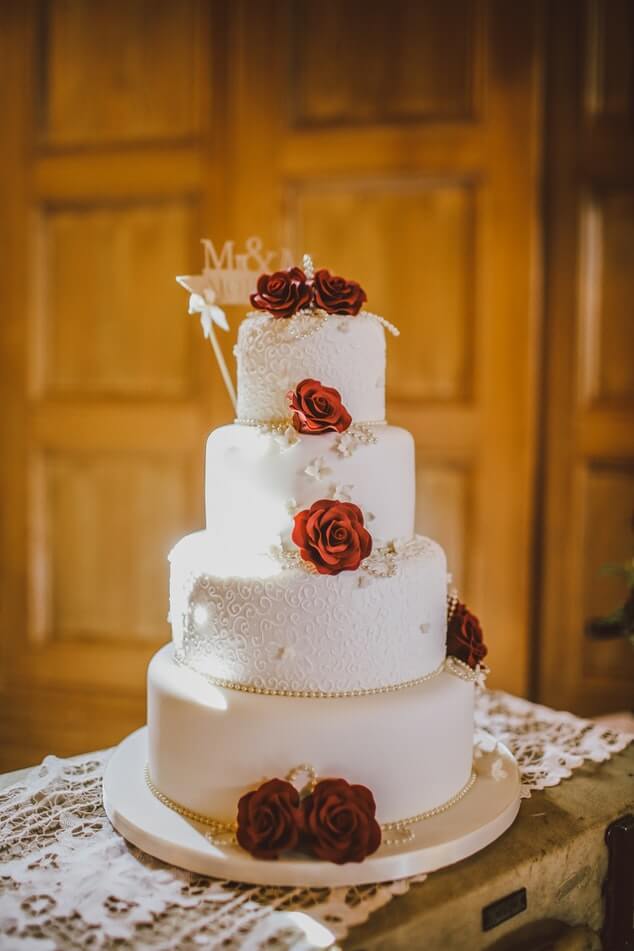
- Tall wedding cakes have several tiers and are sophisticated and majestic to gaze upon.
- These cakes are a perfect choice for a wedding that has many guests.
Mini Cakes
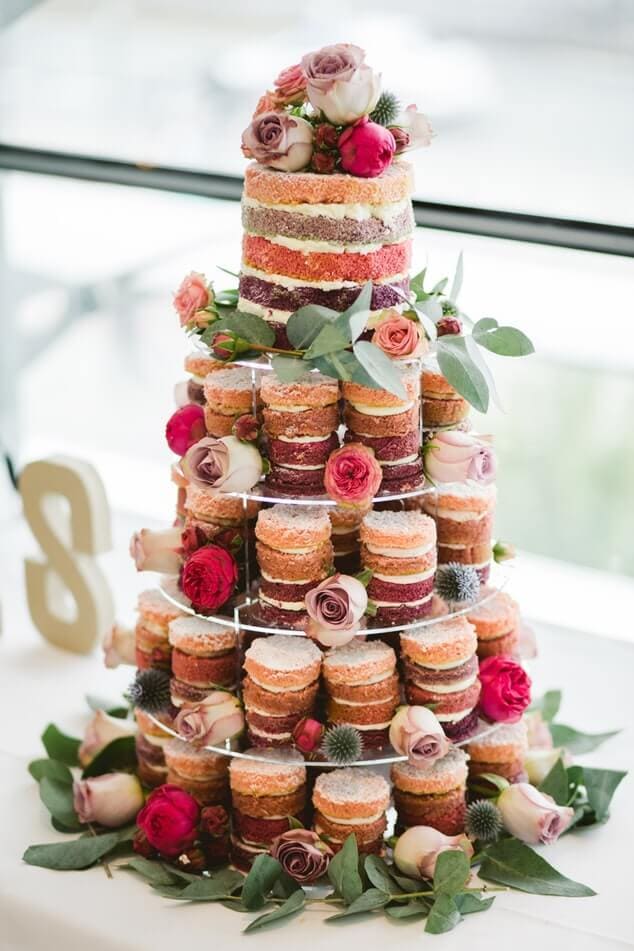
- Mini cakes are different flavored cakes that are given to individual guests.
- They are the best option for the bride and groom who do not want to stick to one flavor or who don’t want the trouble of cutting the cake into individual pieces.
Floral Wedding Cakes
- Floral cakes are the most popular type of wedding cake and are richly decorated with a variety of flowers.
- The floral design can complement any wedding theme and is the best option for those who want an elegant cake at an affordable prize.
Novelty Wedding Cakes
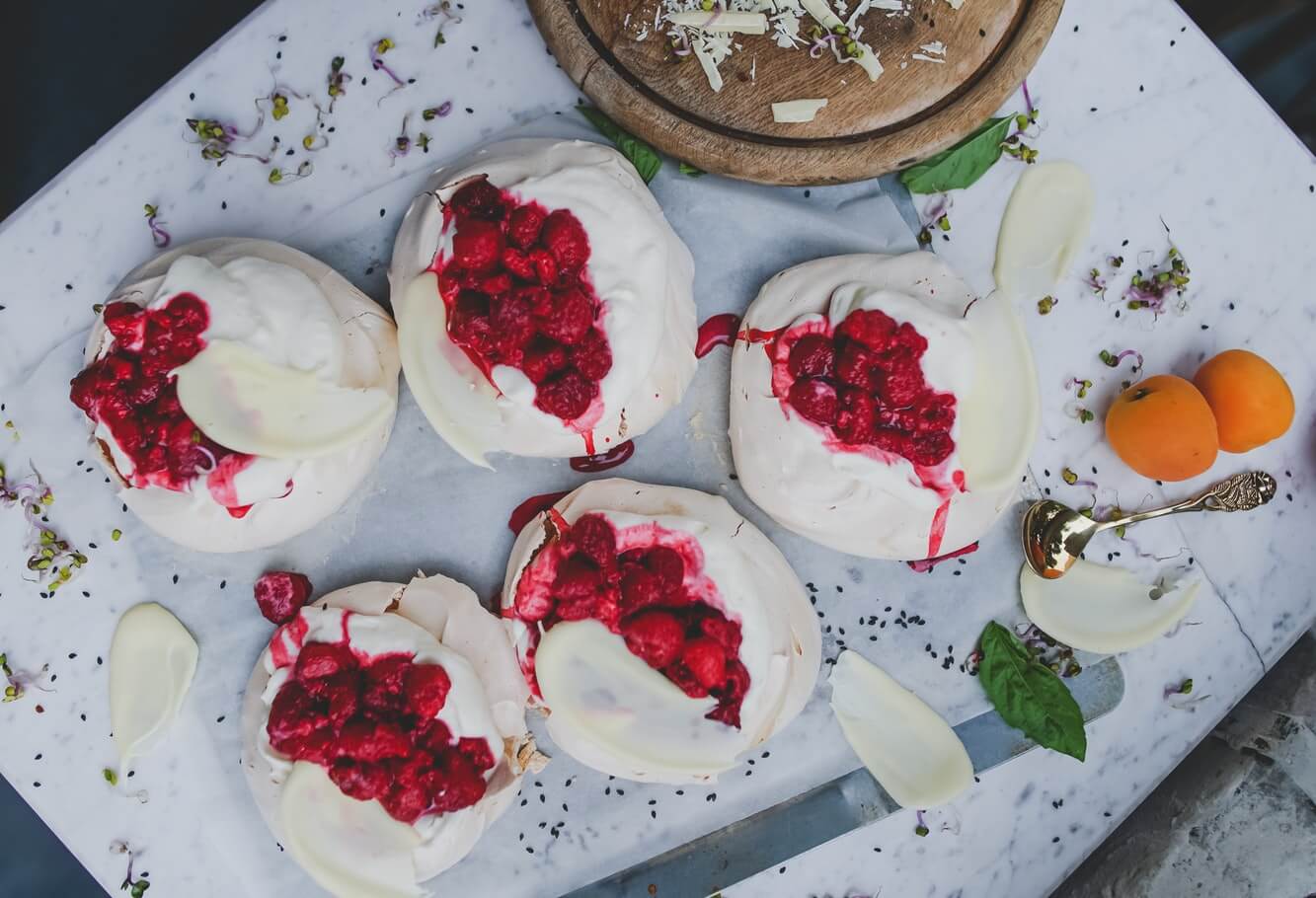
- Novelty wedding cakes are unique styles of cakes or pastries. Commonly preferred pastries are doughnuts, macaroons, and marshmallows.
- These types of cakes are desired by couples who have a unique and distinct taste.
Painted Wedding Cakes
- Painted wedding cakes are the perfect choice for couples who want to personalize their wedding cake in an artistic fashion.
- Hand painted cakes can be made to suit a themed wedding or show the unique style of the bride and groom.
Chocolate Wedding Cakes
- Chocolate cakes are ideal for those who prefer cakes to be filled with soft, velvety chocolate.
- For those who still want to retain the tradition of having a white wedding cake, they can opt for white chocolate cakes.
Naked Wedding Cakes
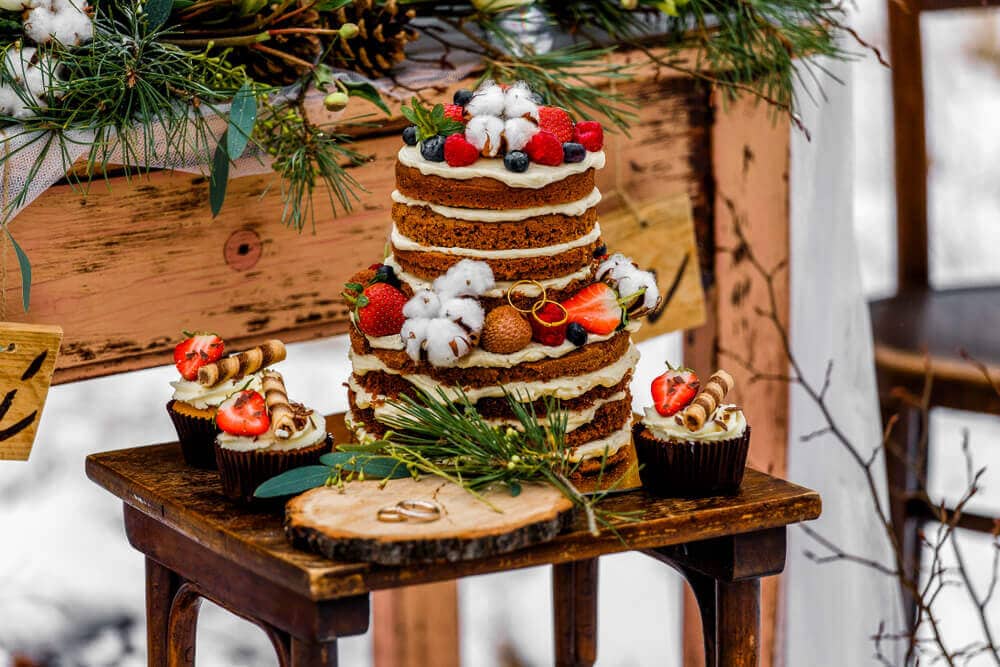
- Naked wedding cakes are decorated with fresh fruits and bright flowers, the perfect choice for a summer themed wedding.
- They are also desired by those who prefer fresh fruits to sugar and cream.
Metallic Cakes
- Metallic cakes are glazed with gold, silver, or bronze. These shimmering cakes look powerful and majestic.
- They are a great option for themed weddings and traditional weddings alike.
In Brief
A wedding is never quite complete without a scrumptious and beautiful cake. Cakes have always been an important and significant element in weddings since ancient times, and while the meaning of the wedding cake has changed from a symbol of purity and fertility to a symbol of union and happiness, it remains as important and as integral a part of weddings as ever.








